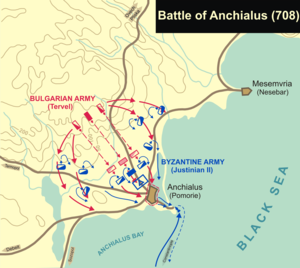708
Appearance
| Millennium: | 1st millennium |
|---|---|
| Centuries: | |
| Decades: | |
| Years: |
| 708 by topic |
|---|
| Leaders |
| Categories |
| Gregorian calendar | 708 DCCVIII |
| Ab urbe condita | 1461 |
| Armenian calendar | 157 ԹՎ ՃԾԷ |
| Assyrian calendar | 5458 |
| Balinese saka calendar | 629–630 |
| Bengali calendar | 115 |
| Berber calendar | 1658 |
| Buddhist calendar | 1252 |
| Burmese calendar | 70 |
| Byzantine calendar | 6216–6217 |
| Chinese calendar | 丁未年 (Fire Goat) 3405 or 3198 — to — 戊申年 (Earth Monkey) 3406 or 3199 |
| Coptic calendar | 424–425 |
| Discordian calendar | 1874 |
| Ethiopian calendar | 700–701 |
| Hebrew calendar | 4468–4469 |
| Hindu calendars | |
| - Vikram Samvat | 764–765 |
| - Shaka Samvat | 629–630 |
| - Kali Yuga | 3808–3809 |
| Holocene calendar | 10708 |
| Iranian calendar | 86–87 |
| Islamic calendar | 89–90 |
| Japanese calendar | Keiun 5 / Wadō 1 (和銅元年) |
| Javanese calendar | 600–602 |
| Julian calendar | 708 DCCVIII |
| Korean calendar | 3041 |
| Minguo calendar | 1204 before ROC 民前1204年 |
| Nanakshahi calendar | −760 |
| Seleucid era | 1019/1020 AG |
| Thai solar calendar | 1250–1251 |
| Tibetan calendar | 阴火羊年 (female Fire-Goat) 834 or 453 or −319 — to — 阳土猴年 (male Earth-Monkey) 835 or 454 or −318 |

Year 708 (DCCVIII) was a leap year starting on Sunday of the Julian calendar, the 708th year of the Common Era (CE) and Anno Domini (AD) designations, the 708th year of the 1st millennium, the 8th year of the 8th century, and the 9th year of the 700s decade. The denomination 708 for this year has been used since the early medieval period, when the Anno Domini calendar era became the prevalent method in Europe for naming years.
Events
[edit]By place
[edit]Byzantine Empire
[edit]- Arab–Byzantine War: The Umayyads under Maslamah ibn Abd al-Malik capture and sack the Byzantine city of Tyana (Cappadocia) after a prolonged siege, and following a victory over a Byzantine relief army. Maslamah also leads another expedition in the summer, raiding and conquering Amorium (modern Turkey).[1]
Europe
[edit]- Battle of Anchialus: A Byzantine expeditionary force under Emperor Justinian II is defeated near the seaside city of Anchialus, on the Black Sea Coast. The Byzantines are overwhelmed by a surprise attack of Bulgarian cavalry, led by Tervel. Justinian manages to reach the fortress, and escapes to Constantinople on a ship.[1][2]
Asia
[edit]- Nazaktar Khan, a Turk Shahi prince in alliance with the Tibetan Empire, captures Bactria from the Umayyads.
- August 29 – Copper coins are minted in Japan for the first time (Traditional Japanese date: August 10, 708).
By topic
[edit]Medicine
[edit]- Tea drinking gains popularity among the Chinese. It is also valued for its alleged medicinal values (approximate date).
Religion
[edit]- January 15 – Pope Sisinnius succeeds Pope John VII as the 87th pope.[2]
- March 25 – Pope Constantine I succeeds Pope Sisinnius as the 88th pope.[2]
- Island Mont Tombe is dedicated to Michael and renamed Mont Saint-Michel.
Births
[edit]- Theudoald, mayor of the palace of Austrasia (or 707)
- Yuthog Yontan Gonpo, Tibetan high priest (lama) (d. 833)
Deaths
[edit]- February 4 – Sisinnius, pope of the Catholic Church
- June 5 – Jacob of Edessa, Syriac writer
- Abd-Allah ibn Ibadh, Muslim jurist and imam
- Drogo, duke of Champagne (b. 670)
- Julian II the Roman, Syriac Orthodox Patriarch of Antioch.[3]
References
[edit]- ^ a b Treadgold, Warren T. (1997), A History of the Byzantine State and Society, Stanford, CA: Stanford University Press, p. 341, ISBN 0-8047-2630-2
- ^ a b c Venning, Timothy, ed. (2006). A Chronology of the Byzantine Empire. Palgrave Macmillan. p. 191. ISBN 1-4039-1774-4.
- ^ Wilmshurst, David (2019). "West Syrian patriarchs and maphrians". In Daniel King (ed.). The Syriac World. Routledge. pp. 806–813.
